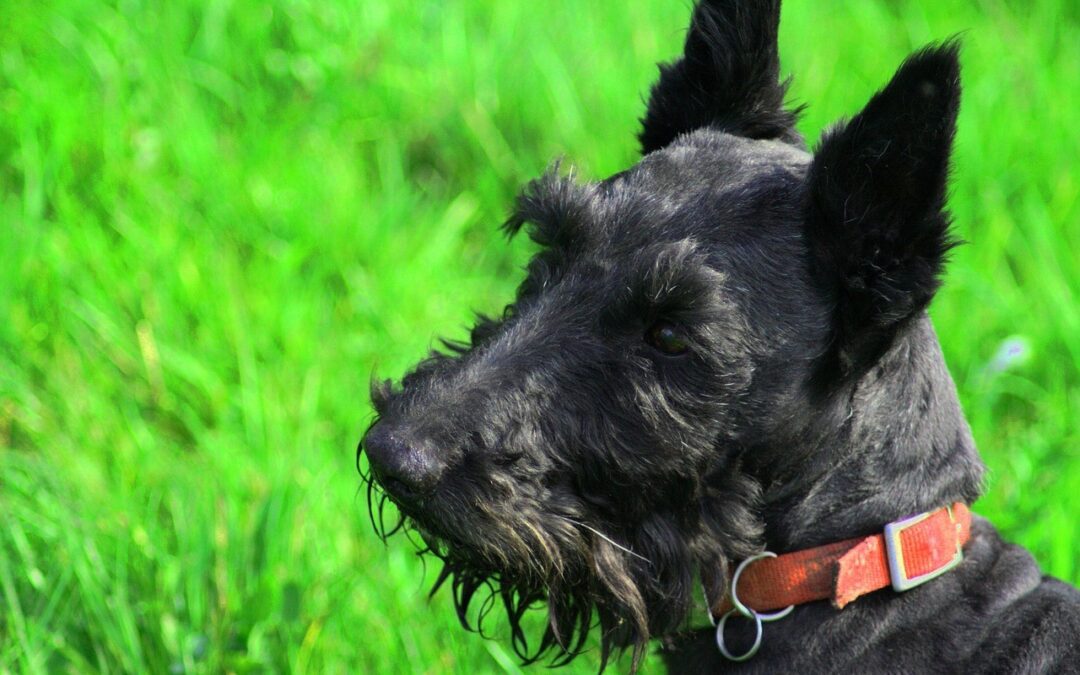“These clients are among my best friends. Both have very serious health issues. Archie is their life, and he’s in severe trouble. Please save his life.”
Such was the high-pressure phone call I received from a referring vet.
Archie, a 10 year old Scottish terrier, was super sick.
He had been lethargic and vomiting for days, and had lost his appetite.
Blood work showed very high liver values and white blood cell numbers that kept going up.
He had been treated with anti-vomiting drugs, antacids, an appetite stimulant, and antibiotics.
He also received a liver protectant and a supplement to keep bile fluid (Ursodiol).
An ultrasound finally revealed the issue: his gallbladder was enlarged and bile was stuck in there, with no way to escape into the intestine (as it should).
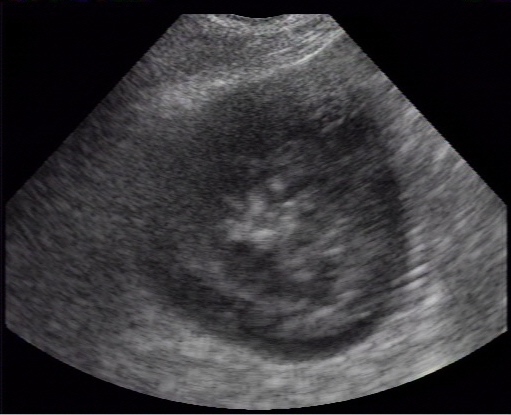
Classic picture of a mucocele on ultrasound
This is a life-threatening condition called a mucocele.
The only hope for Archie was to perform surgery and remove his gallbladder.
Surgery is usually fairly straightforward since we see these regularly.
The ultrasound was also suspicious for cancer of the small intestine and cancer of the bile duct (bile duct carcinoma).
The biggest challenge was putting such a high-risk patient under anesthesia.
But we didn’t exactly have a choice, and this was now considered an emergency surgery.
When the gallbladder is under so much pressure, the big risk is its rupture, which can happen at any moment and can lead to a deadly situation.
So I had a long heart-to-heart with the owners during the consultation. I explained the risks of surgery, and especially of anesthesia.
They understood the risks, and realized this was our only hope.
They reminded me how important this dog is in their lives.
Can you imagine the pressure?
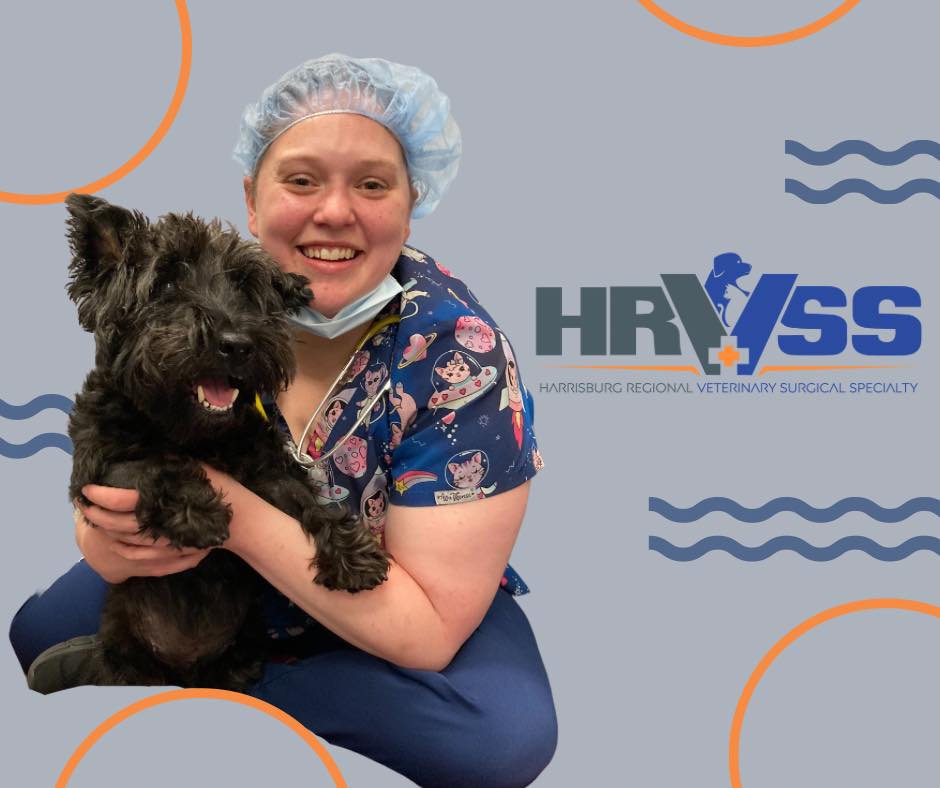
Archie hangs out with his nurse before surgery
Warning: some of the pictures below are graphic and not for the faint of heart !!!
After Archie was put under anesthesia, we opened his belly up.
The gallbladder was hugely distended (translation: it probably would have ruptured some time later because of the increased pressure). It was attached to several nearby organs, but we were able to remove it safely.
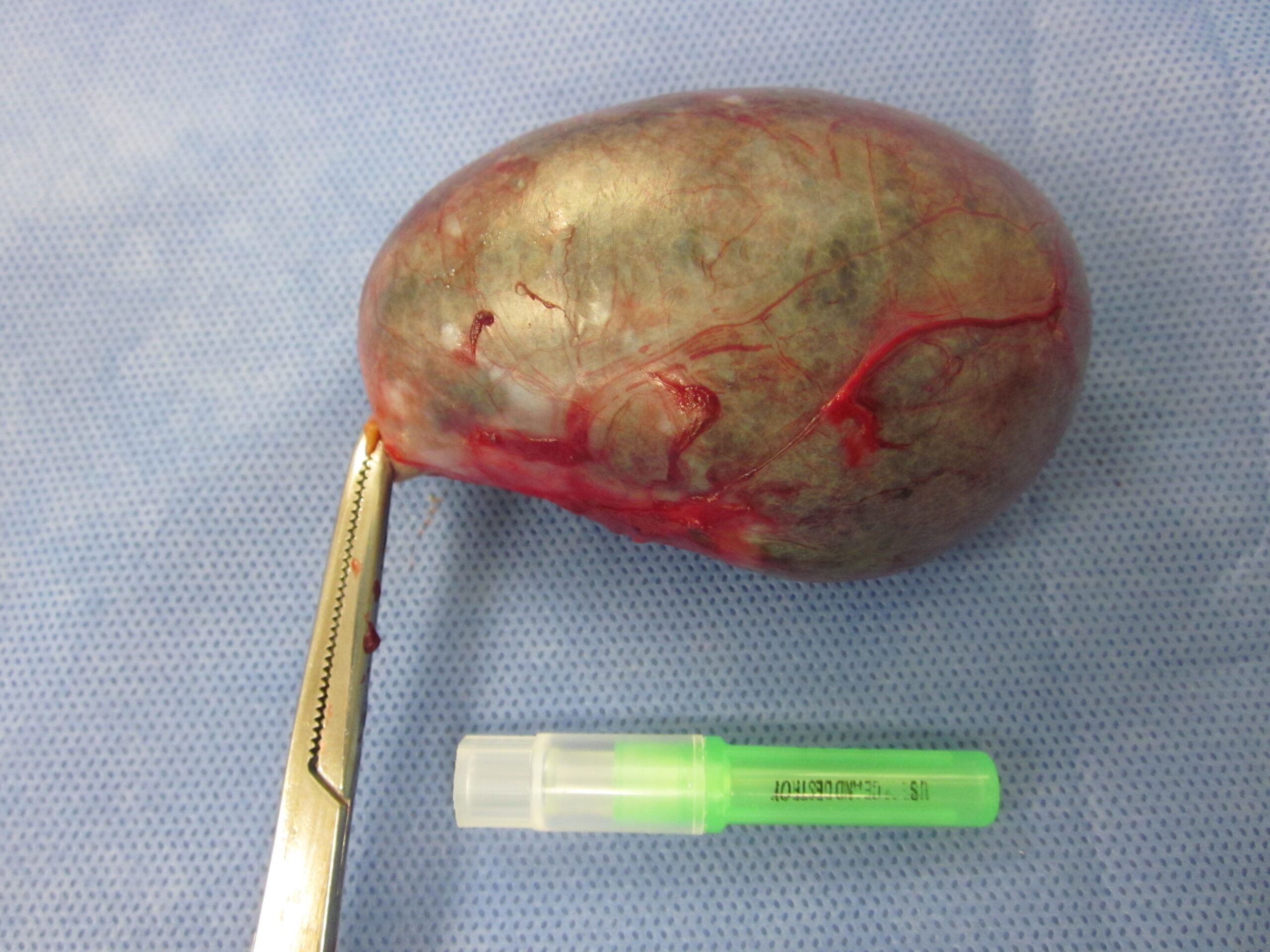
This is not Archie’s gallbladder, but a similar one from a 13 year old Lab. The gallbladder is severely distended. It wouldn’t take much to make it “pop”.
An incision was made in the small intestine to clean up the canal that carries bile from the gallbladder to the small intestine (bile duct).
It was completely blocked, so we unblocked it so bile could flow freely again.
In a mucocele, the bile is very thick. The first half of the name means mucus. The bile has too much mucus, which makes it thicker, like a gel.
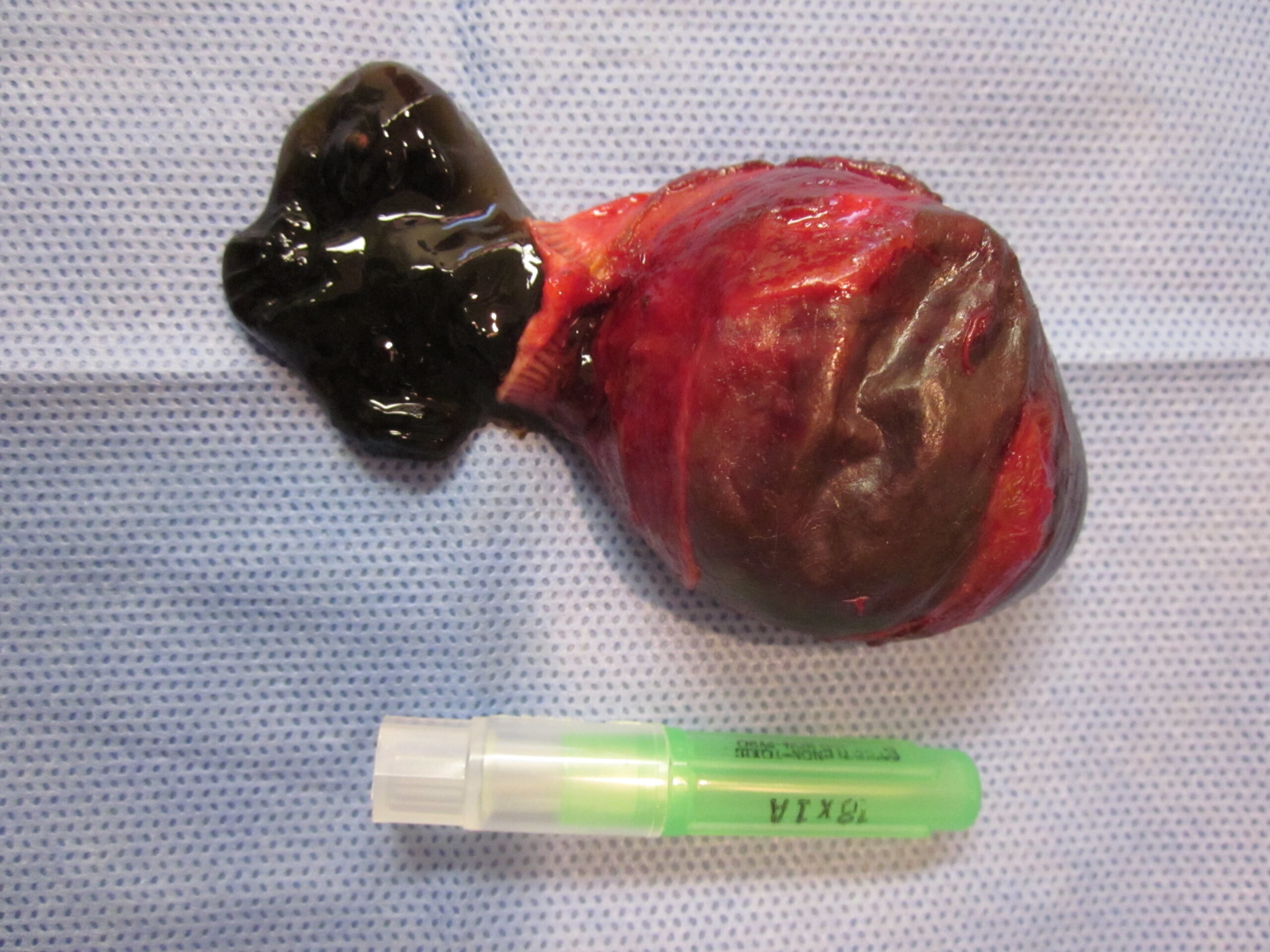
This is not Archie’s gallbladder, but a similar one from a 10 year old Pug. The black, shiny, gooey stuff is super thick bile that built-up in a gallbladder mucocele. Now you understand why such thick bile cannot flow freely
There was no sign of a tumor in the small intestine, but we took a biopsy to be safe.
And there was no mass in the bile duct.
Lastly, we took a culture (a sterile swab) from the bile inside the gallbladder.
Everything else looked fine in Archie’s belly.
He recovered smoothly from anesthesia and surgery.
To be extra safe, we transferred him to an emergency clinic for close overnight supervision.
He eventually went home to recover.
About a week later, the biopsies came back: the gallbladder had a mucocele, and the small intestine showed no sign of a tumor.
The culture came back negative: there was no sign of infection.
So these were the best lab reports we could hope for!
Archie progressively got back on his feet.
2 weeks after surgery, he was “doing great at home, and his appetite was excellent.”
And 3 months postop, he was still feeling great and was back to normal.
If you would like to learn how we can help your pet with safe surgery and anesthesia, please contact us through www.HRVSS.com
Never miss a blog by subscribing here: www.HRVSS.com/blog
Phil Zeltzman, DVM, DACVS, CVJ, Fear Free Certified
Pete Baia, DVM, MS, DACVS

